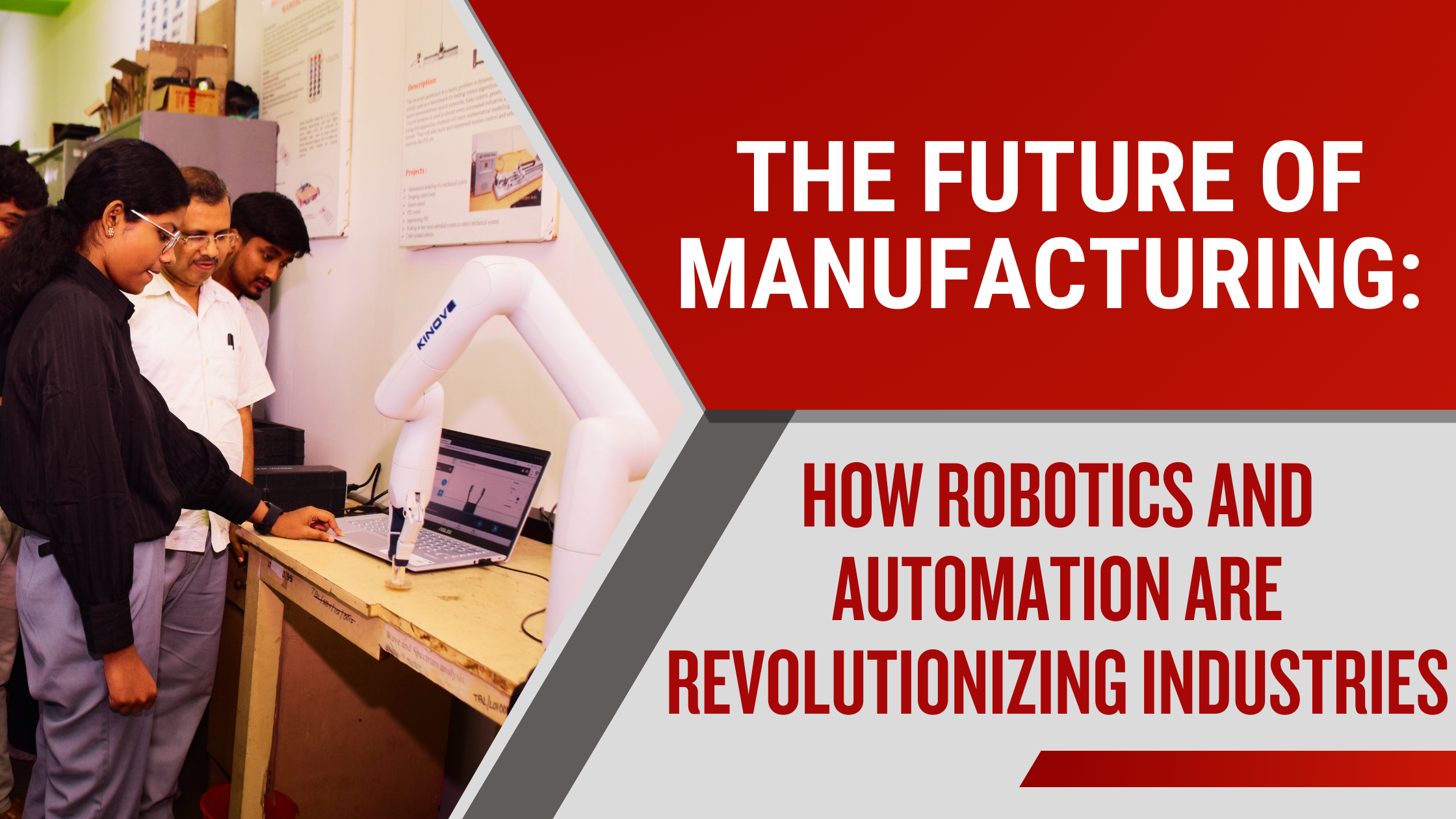The future of manufacturing is increasingly defined by robotics and automation, heralding a revolution across industries. Here’s a comprehensive overview of how these technologies are reshaping the manufacturing landscape:
1. Increased Efficiency:
- Robots equipped with advanced sensors and algorithms can perform repetitive tasks with precision and speed, leading to higher productivity and lower error rates.
- Automation streamlines workflows by integrating machines and processes, reducing downtime and optimizing resource utilization.
2. Flexibility and Adaptability:
- Robotic arms with modular end-effectors can be quickly reconfigured to handle diverse tasks, enabling manufacturers to swiftly adapt to changing market demands.
- Flexible automation systems empower manufacturers to produce small batches or customized products cost-effectively, catering to niche markets and individualized consumer preferences.
3. Enhanced Safety:
- Collaborative robots (cobots) designed to work alongside humans feature advanced safety features such as force-limiting and power monitoring, mitigating the risk of accidents in manufacturing environments.
- Automated material handling systems reduce manual lifting and carrying, minimizing the likelihood of workplace injuries.
4. Improved Quality Control:
- Vision systems and sensors integrated into robotic arms can inspect products in real-time, detecting defects with greater accuracy than manual inspection methods.
- Machine learning algorithms analyze vast datasets to identify patterns and anomalies, enabling predictive maintenance and preemptive quality control measures.
5. Cost Reduction:
- Lower labor costs associated with automation can enhance competitiveness, especially in regions where labor expenses are high.
- Energy-efficient processes optimize resource consumption, reducing operational expenses and environmental impact.
6. Supply Chain Resilience:
- Localized production facilitated by robotics and automation mitigates the risks associated with global supply chain disruptions, ensuring continuity of operations even during crises.
- On-demand manufacturing enables just-in-time production, minimizing inventory holding costs and reducing excess waste.
7. Upskilling and Workforce Transformation:
- As routine tasks become automated, the workforce can focus on higher-value activities such as programming, maintenance, and innovation.
- Training programs and education initiatives are essential for equipping workers with the skills needed to operate and maintain advanced manufacturing technologies.
8. Innovation and Customization:
- Robotic 3D printing enables rapid prototyping and the production of complex geometries, fostering innovation and customization in product design.
- Advanced analytics leverage data from interconnected machines to optimize processes and identify opportunities for improvement.
Challenges and Considerations:
- Initial investment: Implementing robotics and automation requires substantial capital investment, necessitating careful cost-benefit analysis.
- Workforce displacement: Automation may lead to job displacement in certain sectors, necessitating proactive measures for workforce reskilling and transition support.
- Cybersecurity risks: Interconnected automation systems are vulnerable to cyber threats, necessitating robust cybersecurity measures to safeguard intellectual property and operational integrity.
In conclusion, robotics and automation are driving a paradigm shift in manufacturing, unlocking new levels of efficiency, flexibility, and innovation while presenting challenges that must be carefully navigated. Embracing these technologies strategically can position manufacturers for sustained success in an increasingly competitive global marketplace.


 28 Apr 2024
28 Apr 2024



